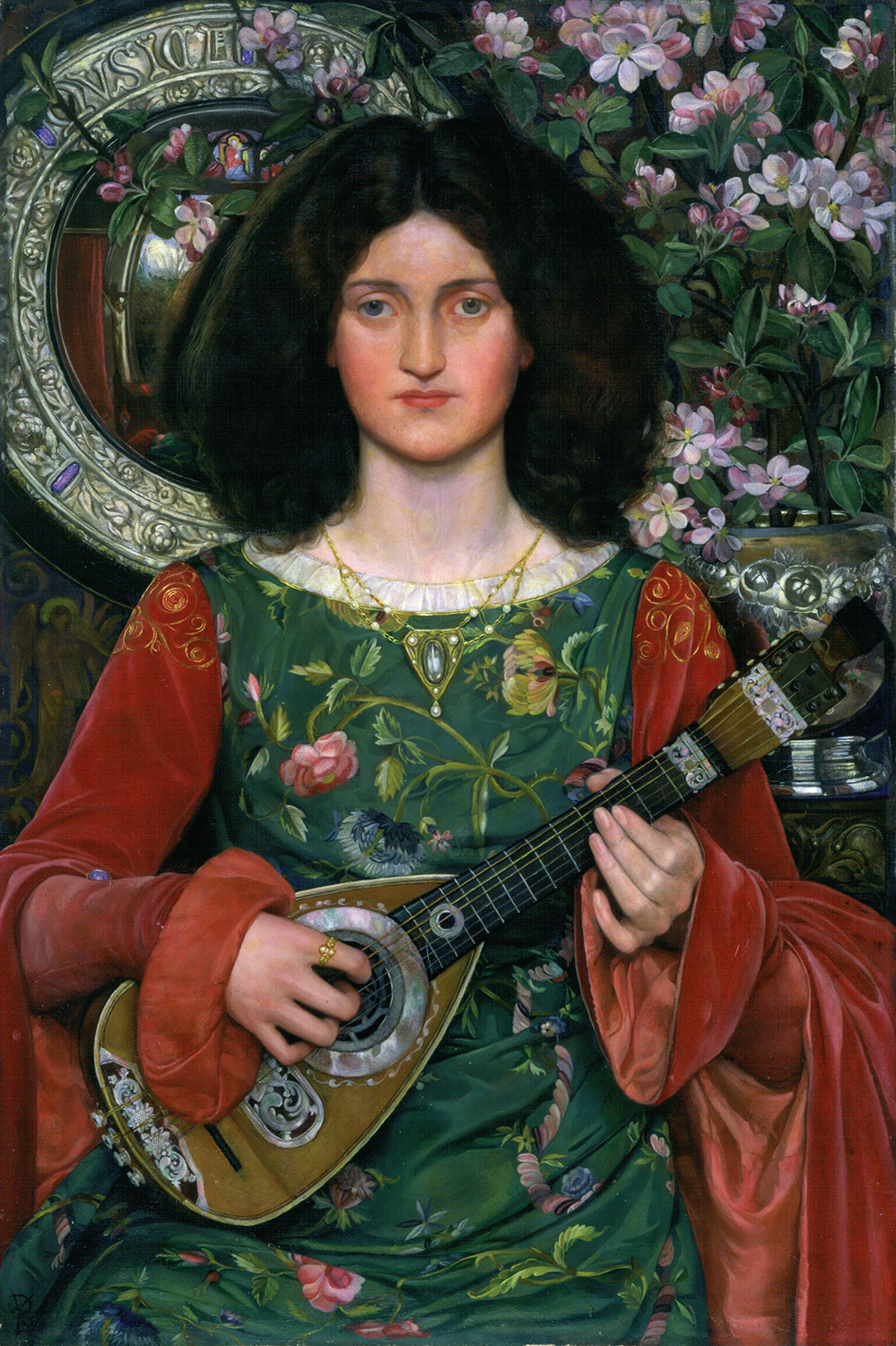
Kate Elizabeth Bunce, Musica, ca. 1895–97, Oil on canvas, 40 3/16 x 30 3/16 x 1 3/4 in. Presented by Sir John Holder, Bart., 1897 © Birmingham Museums Trust. Courtesy American Federation of Arts
In the second half of the nineteenth-century, three generations of young, rebellious artists and designers revolutionized the visual arts in Britain by engaging with and challenging the new industrial world around them. The Pre-Raphaelite Brotherhood, William Morris and his associates, and the champions of the Arts & Crafts Movement offered a radical artistic and social vision whose inspiration was in the pre-industrial past. Their work deeply influenced visual culture in Britain and beyond. Organized from the outstanding collection of the city of Birmingham, United Kingdom, Victorian Radicals will bring together an extensive array of works—many of which have never been exhibited outside the UK—to illuminate this dynamic period of British art.
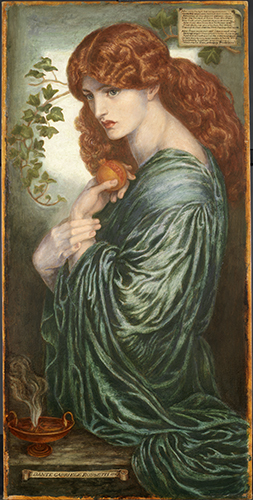
Dante Gabriel Rossetti, Proserpine, 1881–82Oil on canvas, 39 9/16 x 24 3/16 x 2 3/16 in., Birmingham Museums Trust (1927P7). © Birmingham Museums Trust.
Featuring works by pioneering artists including Ford Madox Brown,
Edward Burne-Jones, William Holman Hunt, John Everett Millais, William
Morris, Dante Gabriel Rossetti, and Elizabeth Siddall, Victorian Radicals
will represent the spectrum of avant-garde practices of the Victorian
era, emphasizing the response of Britain’s first modern art movement to
the unfettered industrialization of the period. These artists’ attention
to detail, use of vibrant colors, and engagement with both literary
themes and contemporary life will be illustrated through a selection of
paintings, drawings, and watercolors presented alongside outstanding
examples of decorative arts.
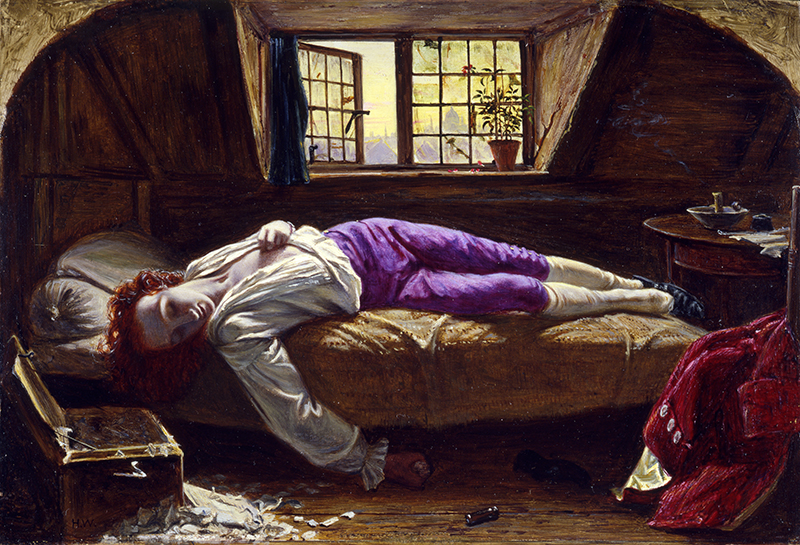

The
Death of Chatterton is an oil painting on canvas, by the English
Pre-Raphaelite painter Henry Wallis, now in Tate Britain, London. Two
smaller versions, sketches or replicas, are held by the Birmingham
Museum and Art Gallery and the Yale Center for British Art. Wikipedia
Created: 1856
The exhibition explores the ideas that preoccupied artists and
critics at the time—the relationship between art and nature, questions
of class and gender identity, the value of the handmade versus machine
production, and the search for beauty in an age of industry—issues that
remain relevant and actively debated today. OKCMOA is proud to be the
first museum to present this traveling exhibition of exceptional
historical and visual richness.

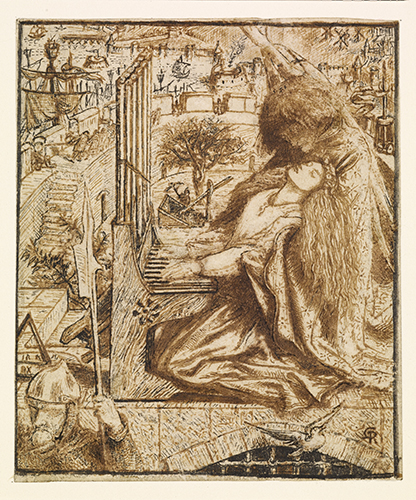
Victorian Radicals: From the Pre-Raphaelites to the Arts and Crafts Movement is organized by the American Federation of Arts and Birmingham Museums Trust.
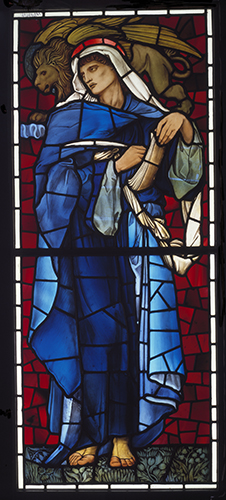
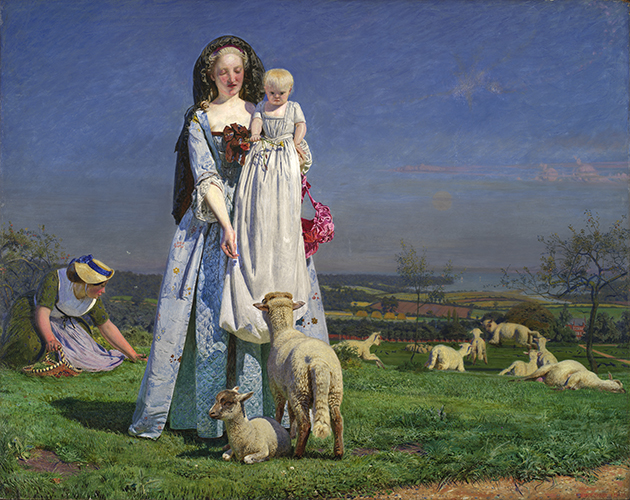
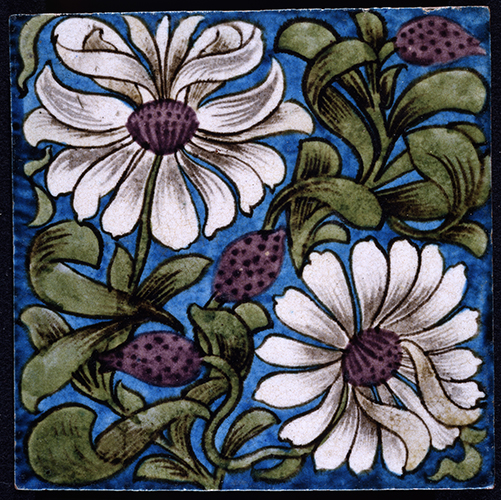
Catalogue

Copublished by the American Federation of Arts and DelMonico Books

La Donna della Finestra, 1881, Dante Gabriel Rossetti, oil on canvas with underdrawing in chalk and graphite, 37 3/4 x 34 1/4 in., Birmingham Museums Trust, Purchased, 1883 (1885P2465), © Birmingham Museums Trust, Courtesy American Federations of Arts.

Victorian Radicals: From the Pre-Raphaelites to the Arts and Crafts Movement is organized by the American Federation of Arts and Birmingham Museums Trust.



Catalogue

This generously illustrated and exciting new study of the Victorian era features rarely seen works, provocative essays, and a striking, period-inspired design.
Although the word "Victorian" connotes a kind of dry propriety, the artists working in the Victorian era were anything but. Starting with the Pre-Raphaelite Brotherhood and lasting through the dawn of the 20th century, the era's painters, writers, and designers challenged every prevailing belief about art and its purpose. The full spectrum of the Victorian avant-garde is in magnificent display in this book that features nearly 150 works drawn from the city of Birmingham's unparalleled collection. Characterized by attention to detail, vibrant colors, and engagement with literary themes and daily life, the paintings, works on paper, and decorative objects featured reveal the myriad ways Victorian artists and artisans made sense of a rapidly changing world. Perceptive essays and the latest scholarship illuminate the issues these artists contended with, including the relationship to art and nature, questions of class and gender identity, the value of handmade versus machine production, and the search for beauty in an age of industry. Designed to reflect the tactile nature of the work and featuring typography inspired by the Victorian era, this beautiful volume is as fresh and bold as the visionaries it celebrates.
Although the word "Victorian" connotes a kind of dry propriety, the artists working in the Victorian era were anything but. Starting with the Pre-Raphaelite Brotherhood and lasting through the dawn of the 20th century, the era's painters, writers, and designers challenged every prevailing belief about art and its purpose. The full spectrum of the Victorian avant-garde is in magnificent display in this book that features nearly 150 works drawn from the city of Birmingham's unparalleled collection. Characterized by attention to detail, vibrant colors, and engagement with literary themes and daily life, the paintings, works on paper, and decorative objects featured reveal the myriad ways Victorian artists and artisans made sense of a rapidly changing world. Perceptive essays and the latest scholarship illuminate the issues these artists contended with, including the relationship to art and nature, questions of class and gender identity, the value of handmade versus machine production, and the search for beauty in an age of industry. Designed to reflect the tactile nature of the work and featuring typography inspired by the Victorian era, this beautiful volume is as fresh and bold as the visionaries it celebrates.
Copublished by the American Federation of Arts and DelMonico Books